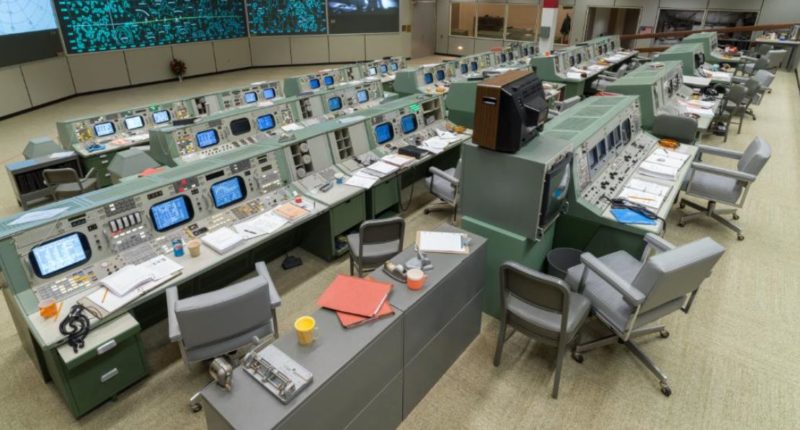July 16, 1969, was the day humans landed on the moon. And on July 20, 650 million people on Earth witnessed Niel Armstrong describe the event through their television screens. His words “…one small step for a man, one giant leap for mankind” still resonate with us.
The landmark mission completes its 50th anniversary this year and NASA has decided to do something special on this occasion. By investing $5 million and two years worth of time, NASA has finally completed the restoration of the mission control facility a.k.a Apollo Mission Operations Control Room 2 (MOCR-2) at NASA’s Johnson Space Center in Houston. Today NASA announced that this restored “historical landmark” will be open to public within a week or two.
The restoration took off in 2017. Five years of fundraising have resulted in this masterful restoration work by the Manned Space Flight Education Foundation Inc. It raised $5 million, along with a Kickstarter campaign by Space Center Houston raising money. NASA contributed almost half-million dollars.
Historic glory: Though the process of preparation and research began years ago, this time lapse captures a 7-month period of restoration in the Apollo Mission Control Room, appearing now as it did in 1969, just in time for the #Apollo50th anniversaries. pic.twitter.com/AT8FjEtp4d
— Johnson Space Center (@NASA_Johnson) June 28, 2019
Since 2017, a team of historians and engineers from the Kansas Cosmosphere’s Spaceworks have been restoring the 544kg Ford-Philco consoles that once occupied the room. The restoration process was done with utmost care and the attention to details is incredible. They’ve used replicas of the parts which weren’t restorable but wherever possible original artifacts were put back in their place. Everything from the paint on the walls, the carpet and even the coffee mugs and ashtrays are placed as they were at that time. It appears as if a moment in history has been frozen.
The MOCR-2 is located in Johnson Space Center’s Building 30 which has been renamed “Chris Kraft Mission Control Center”. In case you are wondering, Apollo 11 wasn’t the only mission that MOCR-2 coordinated. It was also a part of the Apollo 15 mission for which necessary modifications were made to the mission control. MOCR-2 was actively in use until early 1990s.
One more memorable mission which was coordinated from MOCR-2 was Apollo 13. Yes, “Houston, we’ve had a problem” happened in MOCR-2.
“Thanks to the City of Webster and worldwide support, the treasured landmark is now restored, preserving it for future generations,” said William Harris, president and CEO of Space Center Houston through a NASA blog post. “We can gain incredible insight through the accomplishments of the Apollo era and the room will continue to inspire people and innovators to chase their dreams,” he added.
By opening a historical landmark to public, NASA wants people to experience the thrill and witness the time when space exploration was in its golden age. Stepping back in time to look at the past, people can actually realize that NASA has come a long way since then.





